20 June 2011, by Melanie Gault-Ringold
The weather is beautiful again, the swell has eased, and it is a great day to be at sea. We are currently at GT19, the last of the mega stations, with three normal stations and one super station to go. It has been a pretty full schedule for most people over the past 10 days and everyone is starting to look forward to our long steam home. I though it might be nice to have a look around where people have been working.
This is the trace metal clean lab container. All the air is filtered through a HEPA filter to remove any dust or particles that might contaminate the samples. As the ship is made of metal, there is a lot of potential for contamination. As soon as the trace metal rosette is brought back on deck, it is covered with a plastic jacket and the sample bottles are moved into the clean lab in plastic bags.
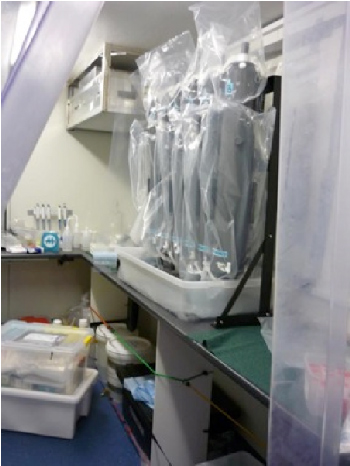
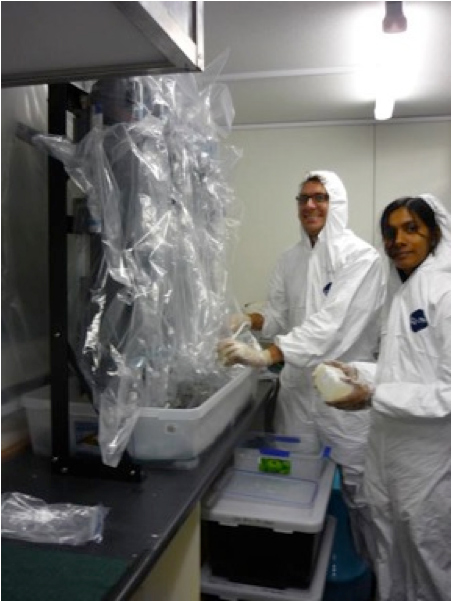
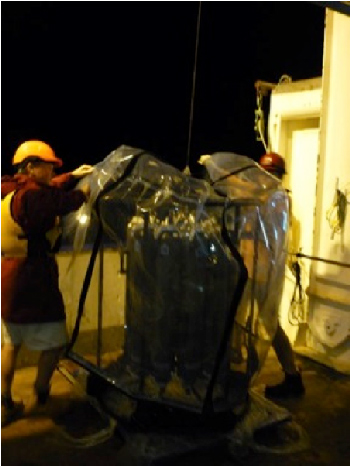
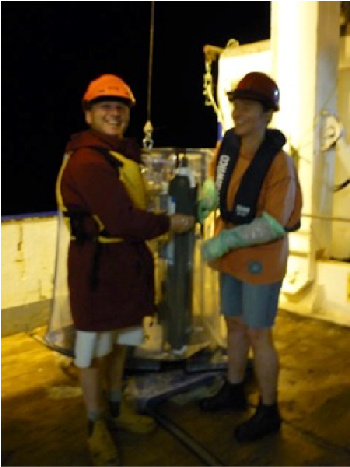
Samples for all of the non-trace metal work are collected from the CTD ‘bio’ and ‘hydro’ casts. The ‘bio’ cast is shallow to focus sampling on the surface mixed layer and the deep chlorophyll maximum (DCM) where there is the most biological activity. Along this transect, the water is very clear and the DCM was as deep as 140 m. The ‘hydro’ cast samples were collected to measure nutrients, dissolved gases, bacterial production, plankton populations, zooplankton populations, chlorophyll, and other chemical parameters. This CTD and niskin rosette is much larger and is used on many more voyages than the trace metal rosette. Therefore it has a more permanent home on the ship with a track to move the rosette from the cut-away where it is deployed and recovered around the corner to be sampled and stored.
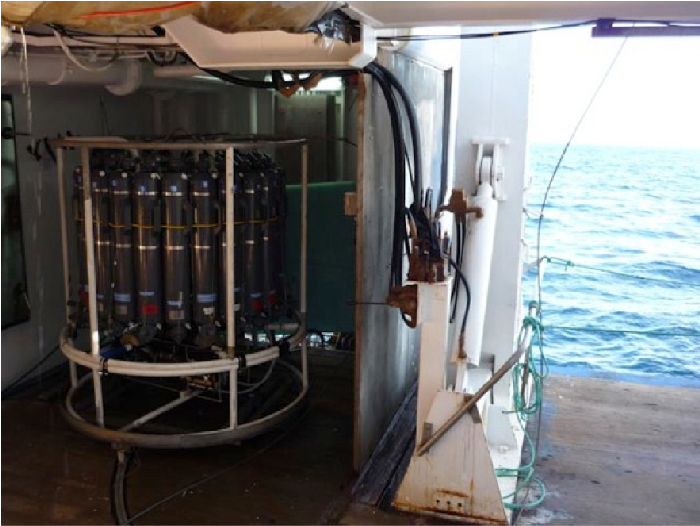
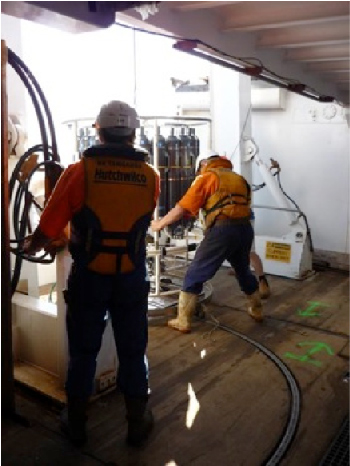
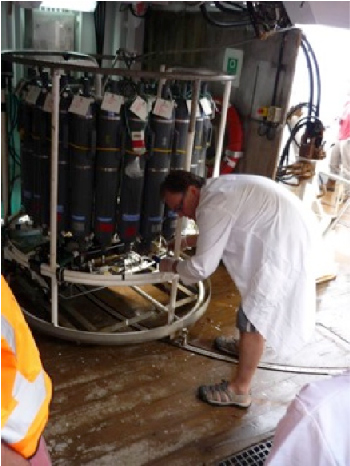
This lab is where nutrient samples are analyzed. Phosphate, nitrate, nitrite, ammonia, and silica are essential for growth. To understand the biological cycle in this region of the oceans, nutrients must be measured. On this voyage, the waters are nutrient depleted and so techniques are required to measure concentrations at the nmol (109 mol) level.


The third shipping container that has been converted into a lab is where bacterial samples are cultured and analyzed for bacterial abundance, activity and diversity. We are interested in the role that bacteria play in trace metal availability, nutrient cycling, and bioremineralization.
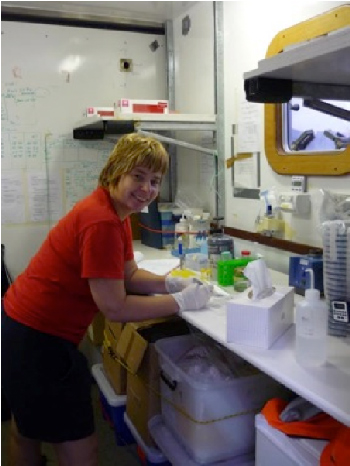
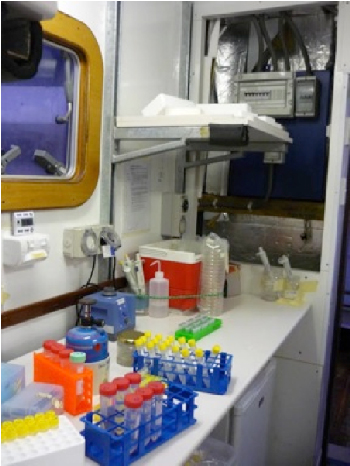
A few people have their filtration racks and instruments set up below deck in the ‘fish factory’. Discrete samples are filtered to look at coccolithophores, biogenic silica, and particulate inorganic carbon. The underway sampling instruments analyze temperature, salinity, chlorophyll, and the optical properties of the surface seawater to determine plankton biomass and whether or not they are calcifying organisms.
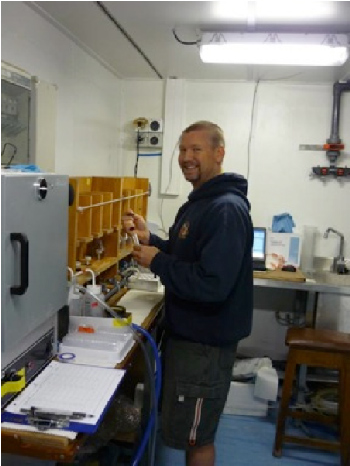
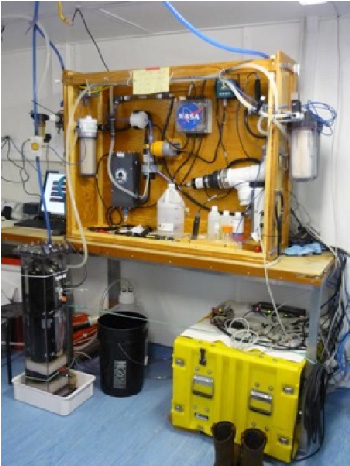
Most of the others onboard that are filtering samples are lucky enough to have portholes to let in the natural light while they work. Seawater has been filtered to collect cyanobacteria to identify the genes associated with nitrogen fixation. Other samples are collected and spiked with isotopes of phosphorus or nitrogen and then incubated. The samples are then filtered and analyzed to determine rates of phosphate uptake and nitrogen fixation, helping to tease apart some of the biological controls on nutrient cycling.
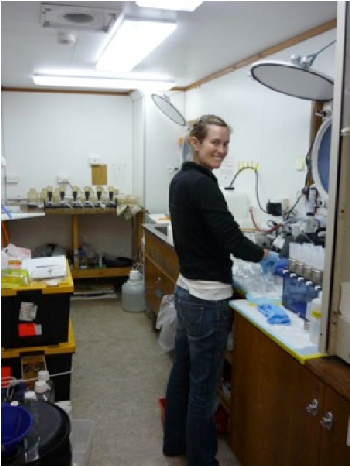
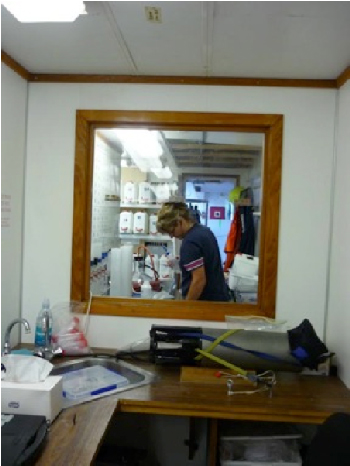
The long hours and random schedules are starting to show on people’s faces. Three more stations to go and then we will be on our way home. A much deserved and needed break will hopefully start in less than 48 hours.
